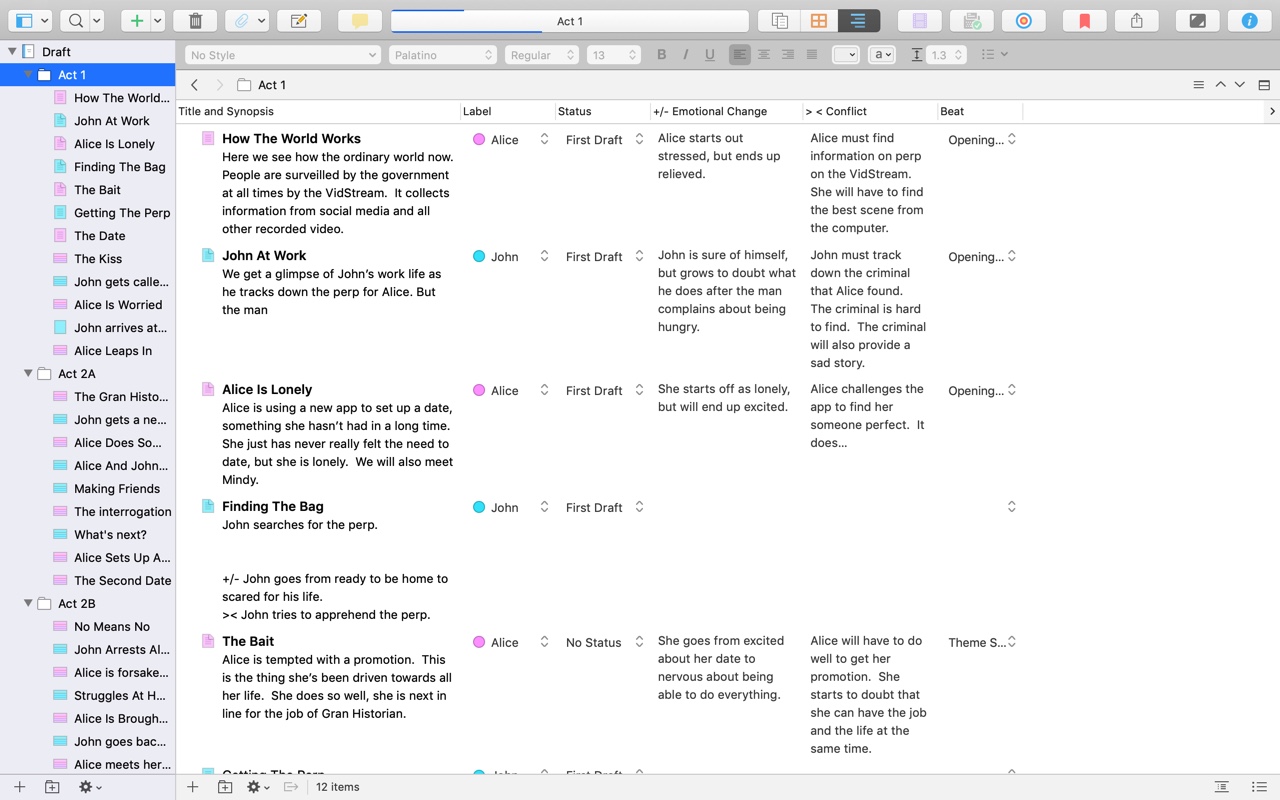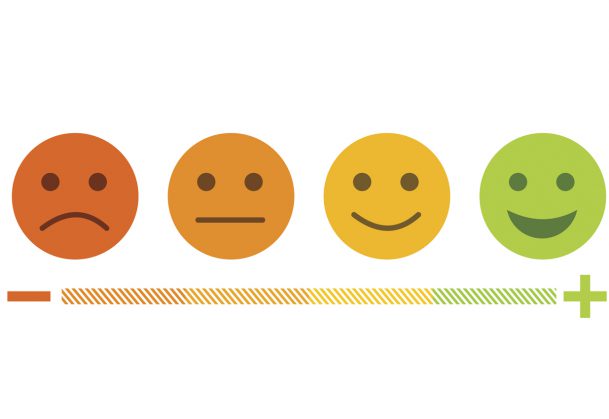At this point, lots of the ground work has been laid. I’m almost ready to start writing, but….
Before I start writing, I have one more step, and I think it’s the most important. I go through my scenes to figure out a couple of things in each: emotions and action.
While I don’t hold to the fact that all scenes need emotion and action, I try to make sure that I have a good quantity of each throughout the story. I think the Act breaks, midpoint, and ending need to be filled with conflict and emotion.
These are two things that I think bring people to a story, and neither
However, my favorite stories are the ones that really play action and emotion off of each other. Not only do the character’s
However, if the story drives the character, I don’t get hooked. I’m just as guilty of writing a story that has the plot causing the character
So when I look back over my story, my outline, and my index cards, I change my view in Scrivener to the Outliner view. It looks like this:

In this view, you summaries that you’ve written on your index cards show up. I then create metadata in Scrivener to make a few more columns. One for conflict, and one column for emotions.
So before I write, I go back through my plot and make sure my character is making choices that are moving the plot forward. I’ll read down the column and look at what I wrote last. First of all, I try to make sure that the plot makes sense and that there are no holes. This part can be tough, and sometimes I’ve written myself into a hole, only having to try to restart later. But trying to make sure that the plot flows here can help when you’re actually writing. It gives me a target when I actually do start to write.
While looking at the plot, I try to make sure that the characters are doing most of the action. When a character is in control of their fate and still make mistakes, people are more inclined to keep watching. If the character is just doing things because the plot dictates that the character needs to be at a certain spot, and there’s no real reason otherwise, the audience will
I might also expand my idea from when I was drafting the plot. I might take the simple 1 sentence I wrote and flesh it out more to make sure that my character is doing something.
The other thing I try to do with each scene is to figure out the emotional moves and impacts. It’s not enough to just figure out what is going to happen to your characters, but you need to figure out how your character is going to deal with those events.
And that to me is where the magic begins to take shape.

In my outline view on Scrivener, I also have a column for emotional impact. For each scene, I’ll write a brief explanation for what I think the emotional change will be. Does the character go from happy to sad, or maybe even happy to confused. A character that is staying even emotionally, is not usually an interesting character.

In my NaNo novel, my main character finds out that her grandfather is still alive, and her father knew it. Instead of just having her stumble upon this information, she was actively looking for evidence of her grandfather’s past in the plot. This causes her to go through a range of emotions, the last one in the scene being anger towards her father. This anger drives her to confront her father, which will clue the audience into the fact that her grandfather was a rebel and was fighting against the government. The government that she thought she was fighting to save. She changes again to confused about what path to take going forward.
This bombshell totally flips her world upside down. She won’t know which way is up, and hopefully
After this, after all the scenes have some type of conflict or emotional change, the
Check back next week when I talk about how I actually start getting the words on paper.
Also look out for an upcoming article about
As always, let me know in the comments if you enjoyed this piece, and if there’s something you would like to see on the site. Until next time.
Discover more from JSwordSmith
Subscribe to get the latest posts sent to your email.